 |
| December 17, 2013 | Volume 09 Issue 47 |
Designfax weekly eMagazine
Archives
Partners
Manufacturing Center
Product Spotlight
Modern Applications News
Metalworking Ideas For
Today's Job Shops
Tooling and Production
Strategies for large
metalworking plants
Engineer's Toolbox:
Elsevier releases 9 new mechanical engineering titles
Elsevier has published nine new titles in the area of Mechanical Engineering. What's your guilty pleasure? Heat pipes, fluid dynamics, aviation design, or ship stability? Elsevier has got you covered.
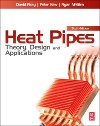 Heat Pipes: Theory, Design and Applications by David Reay, Peter Kew, and Ryan McGlen
Heat Pipes: Theory, Design and Applications by David Reay, Peter Kew, and Ryan McGlen
This takes a highly practical approach to the design and selection of heat pipes, making it an essential guide for practicing engineers and an ideal text for postgraduate students. The sixth edition has been revised to include new information on the underlying theory of heat pipes and heat transfer, and features fully updated applications, new data sections, and updated chapters on design and electronics cooling. The book is a useful reference for those with experience and an accessible introduction for those approaching the topic for the first time.
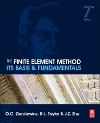 The Finite Element Method: Its Basis and Fundamentals by O.C. Zienkiewicz, R.L. Taylor, and J.Z. Zhu
The Finite Element Method: Its Basis and Fundamentals by O.C. Zienkiewicz, R.L. Taylor, and J.Z. Zhu
This book offers a complete introduction to the basis of the finite element method, covering fundamental theory and worked examples in the detail required for readers to apply the knowledge to their own engineering problems and understand more advanced applications. This seventh edition significantly rearranges the book's content to enable clearer development of the finite element method, with major new chapters and sections on weak forms, variational forms, multi-dimensional field problems, automatic mesh generation, plate bending and shells, and developments in meshless techniques. Focusing on the core knowledge, mathematical and analytical tools needed for successful application, this book is the authoritative resource of choice for graduate level students, researchers and professional engineers involved in finite element-based engineering analysis.
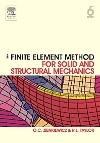 The Finite Element Method for Solid and Structural Mechanics by O.C. Zienkiewicz and R.L. Taylor
The Finite Element Method for Solid and Structural Mechanics by O.C. Zienkiewicz and R.L. Taylor
This is the key text and reference for engineers, researchers mathematicians and senior students dealing with the analysis and modelling of structures - from large civil engineering projects such as dams, to aircraft structures, through to small engineered components. Covering small and large deformation behavior of solids and structures, this seventh edition is a complete solids and structures text and reference in its own right and forms part of the well-known Finite Element Method series. New material in this edition includes separate coverage of solid continua and structural theories of rods, plates and shells; extended coverage of plasticity (isotropic and anisotropic); node-to-surface and 'mortar' method treatments; problems involving solids and rigid and pseudo-rigid bodies; and multi-scale modelling.
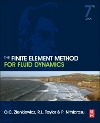 The Finite Element Method for Fluid Dynamics by O.C. Zienkiewicz, R.L. Taylor, and P. Nithiarasu
The Finite Element Method for Fluid Dynamics by O.C. Zienkiewicz, R.L. Taylor, and P. Nithiarasu
This book offers a complete introduction to the application of the finite element method to fluid mechanics for graduate level students, researchers and professional engineers. It begins with a useful summary of all relevant partial differential equations before discussing convection stabilization procedures, steady and transient state equations, and numerical solution of fluid dynamic equations. The character-based split (CBS) scheme is introduced and discussed in detail, followed by thorough coverage of incompressible and compressible fluid dynamics, flow through porous media, shallow water flow, and the numerical treatment of long and short waves. Updated throughout, this seventh edition includes new chapters on fluid-structure interaction and biofluid dynamics.
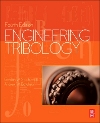 Engineering Tribology by Gwidon W. Stachowiak and Andrew W. Batchelor
Engineering Tribology by Gwidon W. Stachowiak and Andrew W. Batchelor
The fourth edition of this established introductory reference focuses on the key concepts and engineering implications of tribology. Taking an interdisciplinary view, the book brings together the relevant knowledge from different fields needed to achieve effective analysis and control of friction and wear. Updated to cover recent advances in tribology, this edition includes new sections on ionic and mesogenic lubricants, surface texturing, and multiscale characterization of 3D surfaces and coatings. Current trends in nanotribology are discussed, such as those relating to lubricants, coatings and composites, and geotribology is also introduced. Suitable as an introductory text, a refresher or an on-the-job reference, this book is intended for final year undergraduate and postgraduate students in mechanical engineering as well as professional engineers. It is also relevant to those working in materials engineering, applied chemistry, physics and bioengineering.
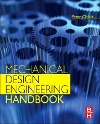 Mechanical Design Engineering Handbook by Peter Childs
Mechanical Design Engineering Handbook by Peter Childs
This is a straight-talking and forward-thinking reference covering the design, specification, selection, use and integration of machine elements fundamental to a wide range of engineering applications. Covering the full spectrum of common mechanical and machine components that act as building blocks in the design of mechanical devices, the book also includes worked design scenarios and essential background on design methodology to help readers get started with a problem and repeat selection processes with successful results. This practical handbook is ideal for those working in mechanical design across a variety of industries and a valuable learning resource for advanced students undertaking engineering design modules and projects as part of broader mechanical, aerospace, automotive or manufacturing programs.
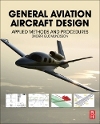 General Aviation Aircraft Design: Applied Methods and Procedures by Snorri Gudmundsson
General Aviation Aircraft Design: Applied Methods and Procedures by Snorri Gudmundsson
Written by an engineer with nearly 20 years of design experience, this versatile handbook serves as the first source of answers to realistic aircraft design questions. The book is structured in an "equation/derivation/solved example" format for easy access to content. Readers will find it a valuable guide to topics such as sizing of horizontal and vertical tails to minimize drag; sizing of lifting surfaces to ensure proper dynamic stability; numerical performance methods; and common faults and fixes in aircraft design. In most cases, numerical examples involve actual aircraft specs. Concepts are visually depicted by a number of useful black-and-white figures, photos, and graphs (with full-color images included in the eBook only). Broad and deep in coverage, it is intended for practicing engineers, aerospace engineering students, mathematically astute amateur aircraft designers, and anyone interested in aircraft design.
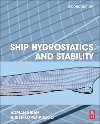 Ship Hydrostatics and Stability by Adrian Biran and Ruben Lopez Pulido
Ship Hydrostatics and Stability by Adrian Biran and Ruben Lopez Pulido
This book is a complete guide to understanding ship hydrostatics in ship design and ship performance, taking readers from first principles through basic and applied theory to contemporary mathematical techniques for hydrostatic modeling and analysis. Real life examples of the practical application of hydrostatics are used to explain the theory and calculations using MATLAB and Excel. The second edition of this established resource includes recent developments in naval architecture, such as parametric roll, the effects of non-linear motions on stability and the influence of ship lines, as well as new international stability regulations. Extensive reference to computational techniques is made throughout and downloadable MATLAB files accompany the book to support hydrostatic and stability calculations. The book also includes definitions and indexes in French, German, Italian and Spanish for international readers.
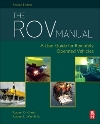 The ROV Manual: A User Guide for Remotely Operated Vehicles by Robert D. Christ and Robert L. Wernli, Sr.
The ROV Manual: A User Guide for Remotely Operated Vehicles by Robert D. Christ and Robert L. Wernli, Sr.
Written by two well-known experts in the field with input from a broad network of industry specialists, the second edition of this book provides a complete training and reference guide to the use of observation class ROVs for surveying, inspection, and research purposes. This new edition has been thoroughly revised and substantially expanded, with nine new chapters, increased coverage of mid-sized ROVs, and extensive information on subsystems and enabling technologies. Useful tips are included throughout to guide users in gaining the maximum benefit from ROV technology in deep water applications. Intended for marine and offshore engineers and technicians using ROVs, this book is also suitable for use by ROV designers and project managers in client companies making use of ROV technology.
Explore more Elsevier engineering titles at http://store.elsevier.com/Engineering/C_10/.
Published December 2013
Rate this article
View our terms of use and privacy policy
